Bessie Coleman built an untouchable legacy, but the aviator’s tragic final flight is still shrouded in whispers of sabotage.
The skies during Women’s History Month have witnessed a series of historic female flights. On March 16, Whiteman Air Force Base in Missouri held the “first all-female two-ship T-38 flyover,” an aerial salute that soared above the KC Current stadium, the “first stadium to be built for women,” according to KSHB.
United Airlines also held a special flight on March 7 that epitomized elegance in aviation and inclusivity on the ground. Aboard Flight 1215, which traveled from Newark, NJ, to Sarasota, FL and back, was an all-women crew. At the helm was Captain Gabrielle Harding, a trailblazer recognized by PEOPLE as not only the second Black woman Line Check Pilot in United’s history, but also “the only Black woman captain working for a commercial airline who graduated from a historically Black college or university’s pilot program.”
Spotlighting trailblazers like Captain Harding is pivotal in paving the runway for future aviators, especially when we consider the gender disparities in the field. A 2022 study from the Women in Aviation Advisory Board reveals that women constitute a mere 4.6 percent of professional pilots. More starkly, Black women sit at a scant 0.5 percent.
In light of these underrepresentation statistics, the stories of women who bravely faced the challenges of their time in aviation become increasingly important for us to recognize and learn from.
While everyone knows the story of Amelia Earhart, from her historic flights to her mysterious disappearance, there’s another pioneering female pilot from the past who is finally getting her due. Just like Earhart, Bessie Coleman shattered equally big barriers—and the tragic circumstances surrounding her own untimely death have also sparked theories of wrongdoing, drawing renewed attention to her story.
Who Was Bessie Coleman?
Before the Wright Brothers’ historic ascent at Kitty Hawk captured the world’s imagination, the most legendary figures in aviation lore were a father and son: Daedalus and Icarus.
In the oft-referenced myth from Ancient Greece, Daedelus crafted wings for his son, Icarus. Basking in the thrill of flight and the warmth of the sun, Icarus soared higher and higher, ignoring his father’s warnings, until the sun’s rays melted his manmade wings, causing him to hurtle to his death.
Icarus has often served as a symbol of human hubris. As people throughout history dared to touch the skies—from Jean-François Pilâtre de Rozier and François Laurent le Vieux d’Arlandes with their hot air balloons in France in 1783, to Alberto Santos-Dumont in Brazil, and the Wright Brothers in North Carolina—their lofty ambitions were met with skepticism from critics who recalled the boy who tumbled from the heavens for flying too close to the sun.
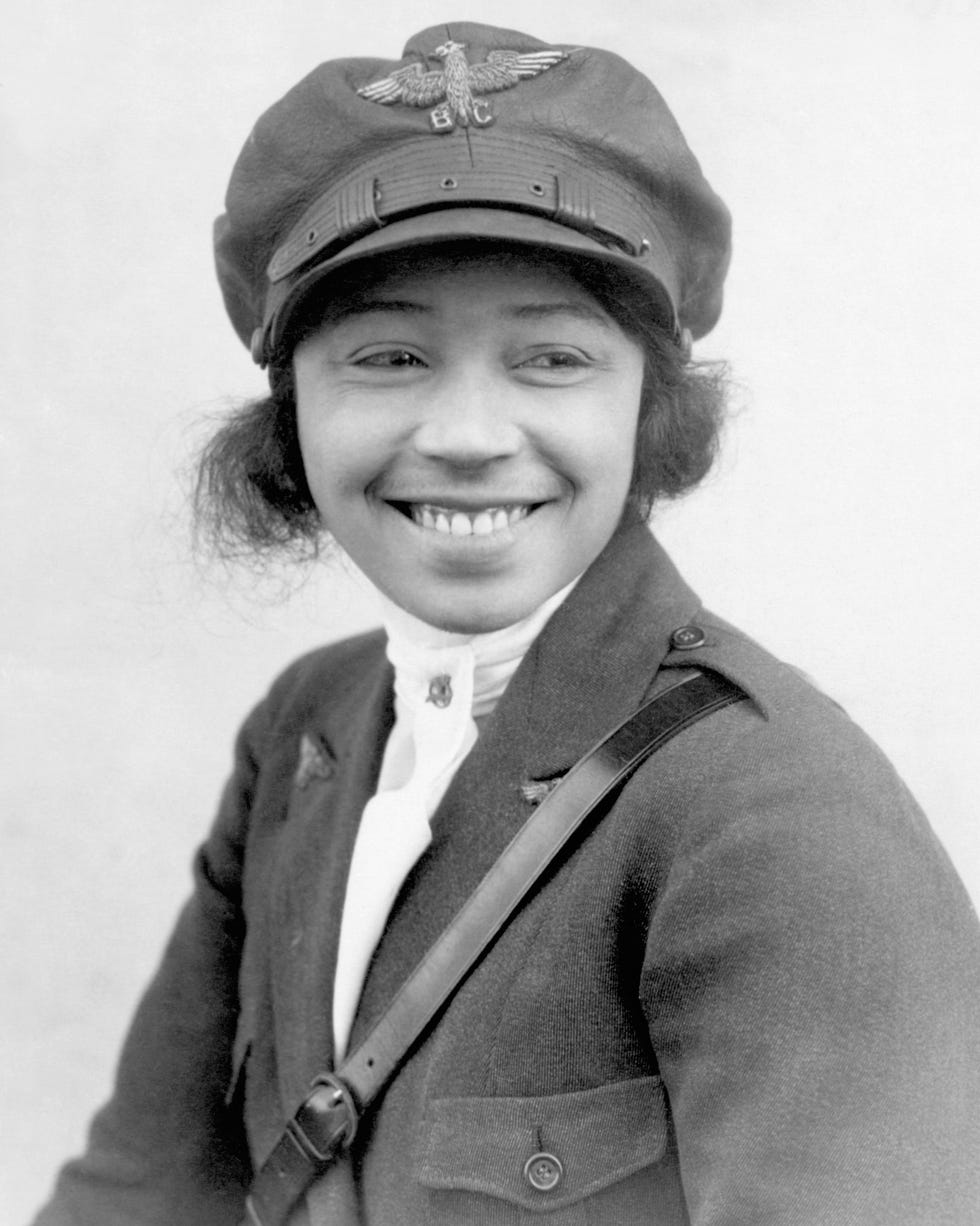
But for Bessie Coleman, a young girl of Black and Indigenous ancestry growing up in the poor town of Waxahachie, Texas, Icarus wasn’t the only fictional figure who kept her grounded. She also had to contend with Jim Crow, a crude minstrel character whose name was colloquially used to describe oppressive and racist laws in the American South.
Coleman didn’t always dream of being a pilot, but she knew she wanted more than the life offered by the small patch of land where she and her family picked cotton for minuscule wages.
At first, Coleman tried to pursue a college education. As Biography notes, “she embarked on a journey to Oklahoma to attend the Oklahoma Colored Agricultural and Normal University (Langston University), where she completed only one term due to financial constraints.”
Money was a constant challenge for the Coleman family. After her father left to reside on a reservation in Oklahoma—an option Coleman’s mother reportedly declined—her mother became the main provider. Eventually, Bessie’s brothers also departed, seeking opportunities in Chicago with hopes of supporting the family back home. In 1915, with her educational ambitions paused, a 23-year-old Coleman followed suit and ventured to Chicago, eager to carve out her own path.
Coleman took a job in Chicago as a nail technician. In an early sign of her tenacity, she chose a prominent spot by the salon window to attract attention and built a reputation by attending to male customers, persuasively telling them that well-groomed nails would help them court women. What began as a means to make ends meet soon turned into a platform for recognition. In 1916, Coleman’s efforts and charm won her the title of “best manicurist in Black Chicago,” bringing her unexpected prominence in her community.
Coleman’s prowess secured her a place at the White Sox Barber Shop, owned by the trainer of the local baseball team for which it was named. Between the clients who sat in her chair and told stories of the brave aviators of World War I, and the cajoling of her combat-veteran brother, who according to Biography “…ribbed her about the superiority of French women who knew how to fly planes,” Coleman found her calling: to soar amidst the clouds.
How Did Bessie Coleman Learn to Fly?
For a Black American woman in 1921, obtaining a pilot’s license was virtually impossible. No one had done it before, and no flight school in the U.S. was willing to let Coleman be the first.
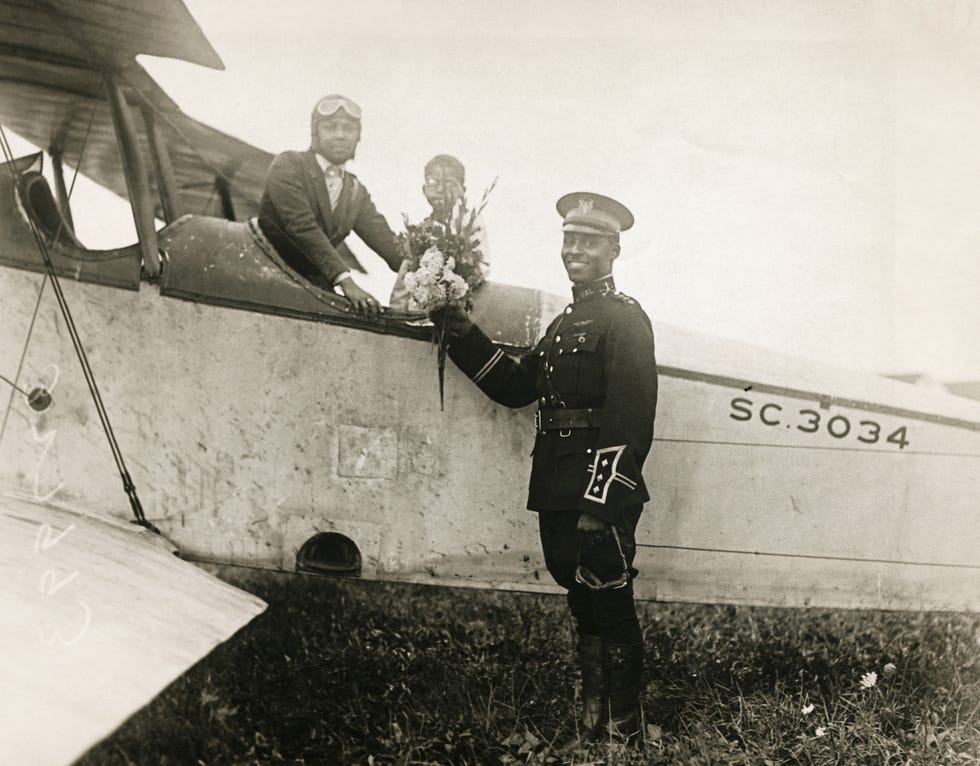
And so, recalling her brother’s comments about the women of France learning how to fly, Coleman chose to follow her dreams all the way to the Caudron Brothers’ School of Aviation in Le Crotoy. While Coleman taught herself French, she couldn’t always connect verbally with her French-speaking instructors. So she bridged the communication gap by “feeling the movements of steering system that connected the front and back cockpits,” according to Biography.
Through her diligence, on June 15, 1921, Coleman became the first Black woman in the world to earn a pilot’s license, which she received from the Fédération Aéronautique Internationale. But, as the podcast Invisible Eagles: Bessie Coleman points out, Coleman’s aeronautic achievement was overshadowed in her home country by a far more shocking story.
Only two weeks before Coleman received her pilot’s license, the Greenwood District of Tulsa, Oklahoma, sometimes referred to as “Black Wall Street,” suffered a devastating and deadly attack from a white mob, one that left between 100 and 300 people dead, and more than 10,000 homeless. And as HISTORY notes, airplanes—likely owned by the nearby Curtiss-Southwest Airplane Company—aided in the terror. So while Coleman flew high in France, back home, her beloved planes had become a tool of suppression.
How Did Bessie Coleman Become Famous?
When Coleman first returned home, she was greeted with praise from the Black newspapers of the time, but pointedly ignored by the white press. When she struggled to find jobs as a Black female pilot, she returned to Europe once more, this time to learn the art of aerial tricks and stunt piloting.
Coleman saw her performances as both a means to live and a beacon of inspiration, aiming to demonstrate to women and people of color that they, too, could aspire to and attain success in the field of aviation. Her grand aspiration was to establish a flight school that would empower African Americans to chase their own piloting dreams.

In September 1922, Coleman debuted her first aerial stunt show in Garden City, New York, during an era when “barnstorming” captivated the American public. These shows, aptly named for the rural practice where pilots utilized farms as impromptu airstrips, roamed from one locale to another, showcasing thrilling maneuvers like barrel rolls and loop-de-loops to awe-struck audiences across the country.
The shows were instrumental in the evolution of civil aviation, bringing the public into early contact with pilots outside the context of the battlefield. Coleman was acutely aware of the significance of her public persona within the barnstorming scene and crafted an image that exuded flair and respectability. As Biography notes, she was referred to as “Queen Bess” or “Brave Bess” by the media, presenting a striking image adorned in her long coat, leather boots, and Sam Browne officer’s belt. She was known to embellish her credentials in interviews, adding to the mystique of her character.
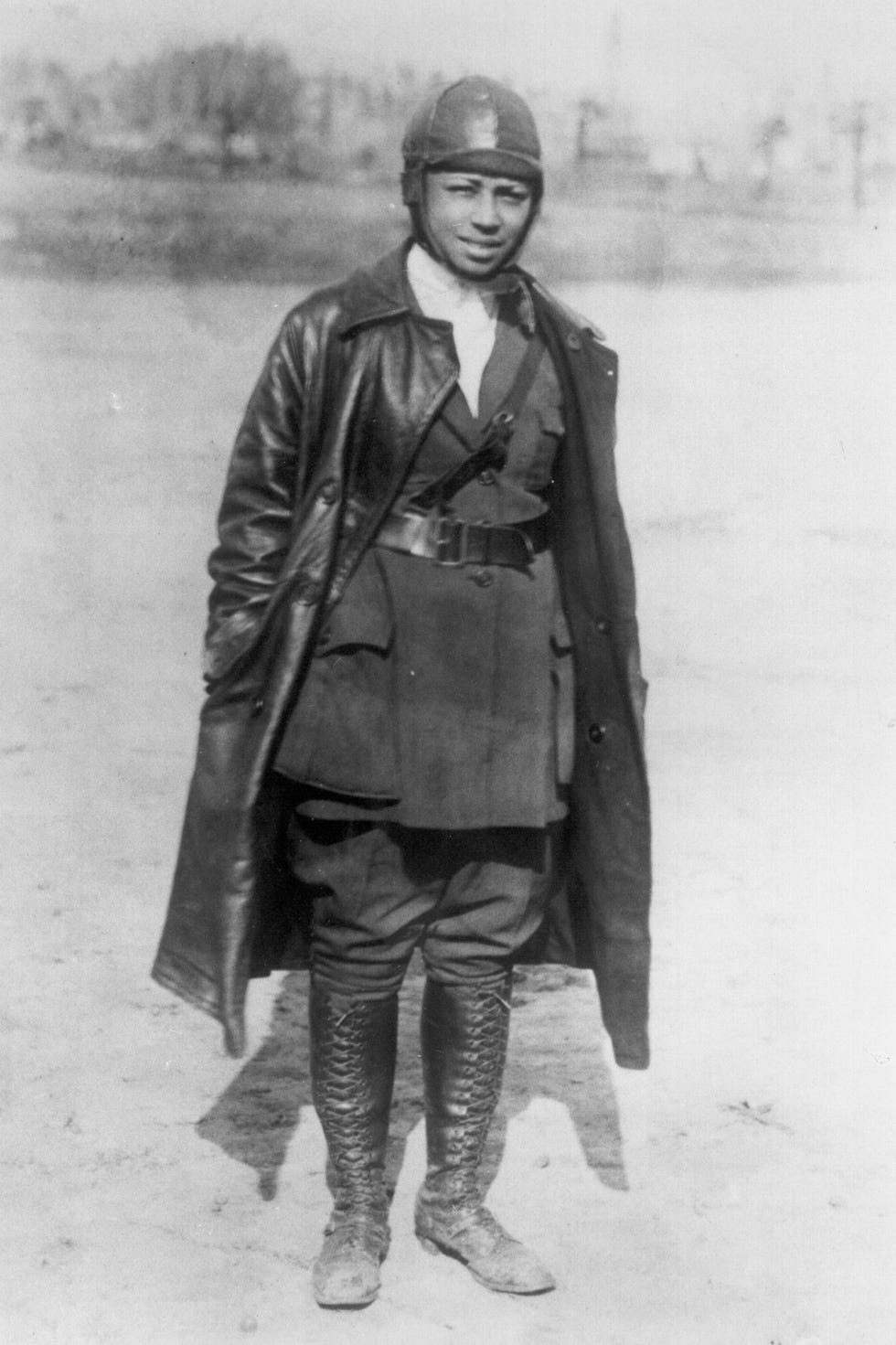
Coleman also recognized the powerful role that burgeoning cinema played in shaping public perception. She incorporated filmed footage of her flights in her traveling lectures, and even reached out to several studios specializing in “race films” (films produced by and for Black audiences in the early 20th century) to make a film about her life’s story. She first wrote to Norman Studios in Jacksonville, Florida, before she was contacted by the Seminole Film Producing Company.
Coleman accepted a role in Seminole’s upcoming feature film, Shadow and Sunshine, but was disappointed with the content of the script, which began with her character in tattered clothes and poverty. Coleman walked away from the project, in breach of her contract, “over her refusal to play to ‘Uncle Tom’ stereotypes,” according to Biography.
How Did Bessie Coleman Die?
Following a brief hiatus to recover from injuries sustained in a crash, Coleman returned to the skies in 1925. By then, she had included other Black female aviators in her shows, per Biography:
“That August, she was accompanied by the first known Black woman to make a parachute jump. After this same parachutist backed out of another gig, Coleman strapped on the jumper’s harness and did the deed herself.”
Ahead of a scheduled performance in Jacksonville, Coleman acquired an airplane, but it was delivered in a severe state of disrepair. The engine of the Jenny, in particular, was so “poorly maintained” that it elicited concern from other aviators who inspected it. On April 30, 1926, Coleman and her co-pilot William Wills went out for a test flight; Wills took control in the front cockpit while Coleman chose to sit without fastening her seatbelt in the back, intending to scout suitable locations for a parachute jump.
Tragically, during the flight, a mechanical failure resulted in catastrophe:
“According to witnesses, the plane suddenly accelerated and nose-dived, before flipping upside-down at about 500 feet. There was nothing to halt Coleman’s fall from the cockpit, and the 34-year-old trailblazer was instantly killed upon hitting the ground.
Wills also died in the subsequent crash, and investigators soon discovered the loose wrench that had jammed the gears and caused the plane’s uncontrollable behavior.”
“It was a tragic, but not uncommon accident in the heyday of barnstorming, at the time aircraft safety was being addressed by Congress with the Air Commerce Act of 1926 that mandated the regulation of pilots and aircraft,” the National Air and Space Museum (NASM) observes.
Despite the absence of concrete evidence to confirm foul play, the NASM acknowledges that “rumors of sabotage could not be stopped or corroborated.” Given the wrench that caused the fatal crash, some speculate whether its presence was an intentional act meant to thwart Coleman’s flight. Contextualizing these suspicions within the era’s racial and gender challenges, it’s understandable why questions linger about whether malicious intent played a role in the tragedy that ended Coleman’s life and career.
And the specter of sabotage in aviation, particularly targeting women, didn’t end with Coleman’s death.
Take the case of the Women’s Air Derby of 1929. As noted by the National Endowment for the Humanities, female pilots competing in the event were met with an alarming, anonymous warning before the race: “Beware of sabotage.” The race was marred by a series of mysterious mishaps ranging from contaminated fuel to structural failures and even life-threatening carbon monoxide leaks—all of which, prominent men in the press asserted, proved that “women can’t fly.”
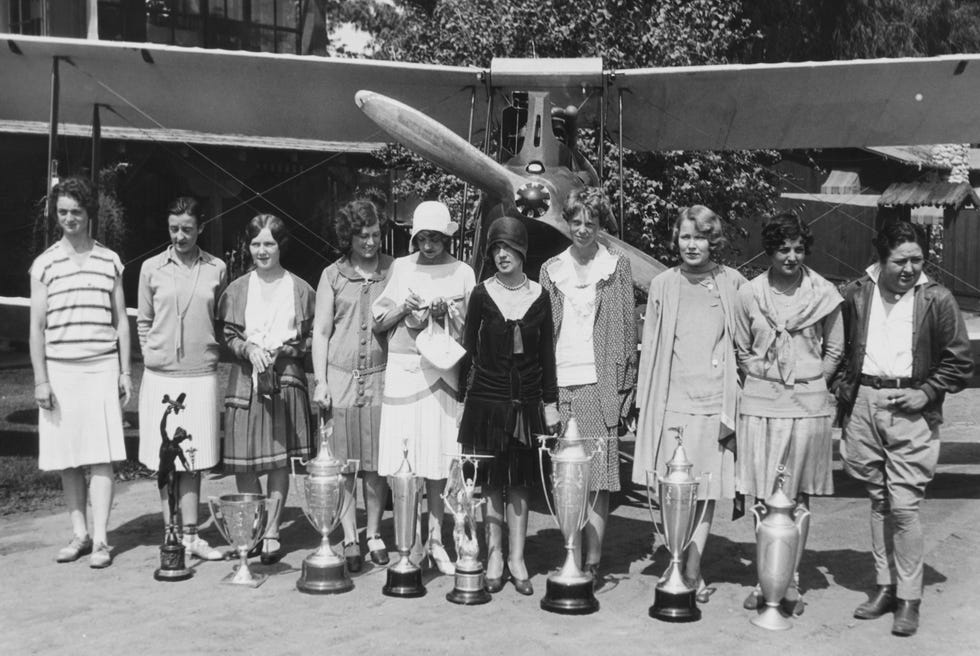
Indeed, all the way through World War II, female pilots were subject to deadly acts of sabotage from men who didn’t feel they belonged in the skies. As TIME notes, “Some women reported finding grass in their tanks or acid in their parachutes, or that their tires had been slashed very slightly so that they’d blow out in the air.” In one instance, “Jacqueline Cochran personally discovered sugar in the gas tank of a plane that had crashed, killing her colleague Betty Davis, but feared she and her colleagues would lose their jobs if they reported it as such.”
The question of how that wrench came to be lodged in Bessie Coleman’s aircraft may forever be left unanswered. Aviation safety during the era was notoriously unreliable, but when coupled with the virulent racism and sexism of the time—exemplified by events such as the Ku Klux Klan’s 1926 march in Washington, D.C.—it presents a troubling backdrop against which Coleman’s death might be viewed.
How Do We Remember Bessie Coleman?
Coleman died in Jacksonville, Florida, a city that held another connection to her dreams beyond aviation. It was the home of Norman Studios, to whom she had written years earlier, expressing her desire to share her life’s story on the silver screen. While there is no evidence that a collaboration between Coleman and the studio ever materialized—nor is it certain if she and filmmaker Richard Norman ever personally crossed paths—Coleman’s spirit and achievements undoubtedly left an indelible mark on Norman.
Norman Studios never made The Bessie Coleman Story, per se, but Coleman provided the inspiration for the character of Ruth Sawtelle, the female lead of Norman’s 1926 film, The Flying Ace. Billed as “the greatest airplane thriller ever filmed,” The Flying Ace, which showcases an all-Black cast, features actress Kathryn Boyd’s Ruth in an outfit that strikingly mirrors the distinctive ensemble Coleman wore during her barnstorming days.
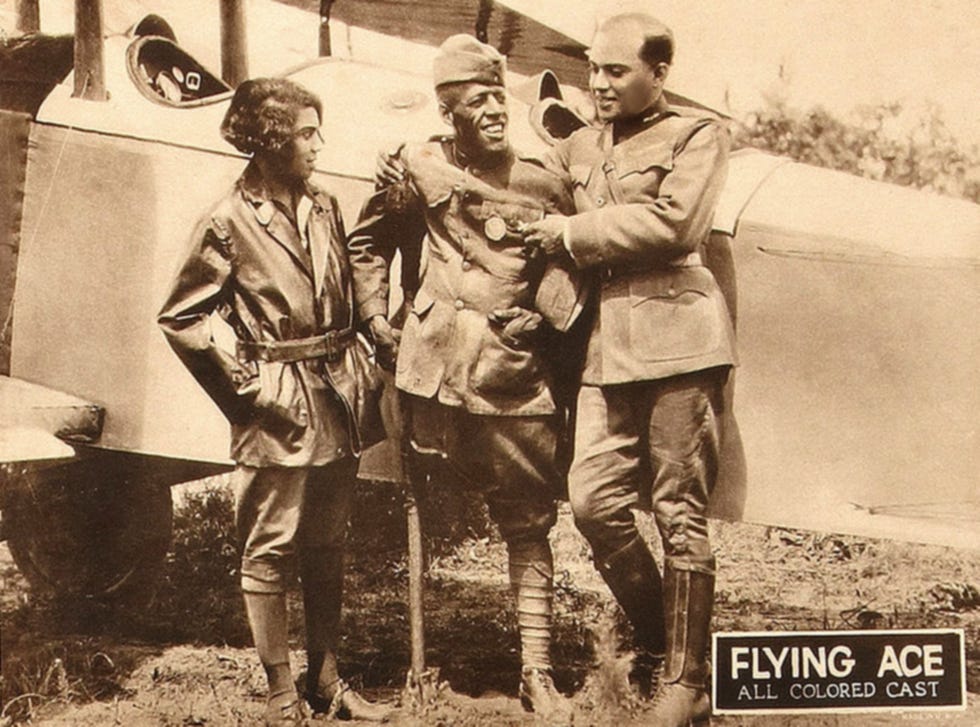
The Flying Ace sidesteps the same racial stereotypes of its era that Coleman staunchly opposed in Seminole’s Shadow and Sunshine, opting instead for a respectful detective thriller. Starring J. Laurence Criner, a distinguished actor from the Harlem theatre scene, as the titular World War I pilot, The Flying Ace stands out as the only fully preserved film from Norman Studios. In 2021, the film was selected for preservation by the Library of Congress’ National Film Registry, having been deemed “culturally, historically, or aesthetically significant.”
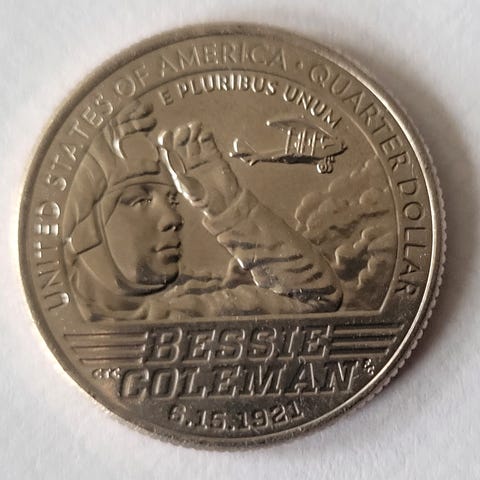
While The Flying Ace might be the most enduring tribute to Coleman from her era, more recent efforts have been made to properly honor her legacy. In 1995, Coleman appeared on a U.S. postage stamp. In 2001, she was inducted into the National Women’s Hall of Fame, and entered the National Aviation Hall of Fame in 2006. And just last year, Coleman was commemorated on an American Women-series U.S. quarter and celebrated with her own Barbie doll in the Inspiring Women series.
Was Bessie Coleman an “American Icarus” who flew too close to the sun? Perhaps a better analogy lies in a different ancient story.
In the Sanskrit epic, the Ramayana, the story of two winged demigods, Sampati and Jatayu, unfolds. The two fly upward one day, toward the sun, in order to test their skills. But the younger brother, Jatayu, gets too close and his wings begin to scorch in the noon heat. Sampati, the older brother, flies ahead, spreading his wings wide to provide shade for his younger sibling and sacrificing his own wings in the process. Sampati crashes into the Vindhya mountains and dies, so that the younger Jatayu can continue to fly.
Bessie Coleman, more than anything, wanted to inspire other pilots from backgrounds traditionally excluded from the skies. Her narrative isn’t about succumbing to prideful excess, but rather, a deliberate act of selflessness for the sake of the future. She was scorched, both by the sun and the spotlight—not so that she could bask in the glow, but so that others might also one day soar.
Source: Popular Mechanics
















